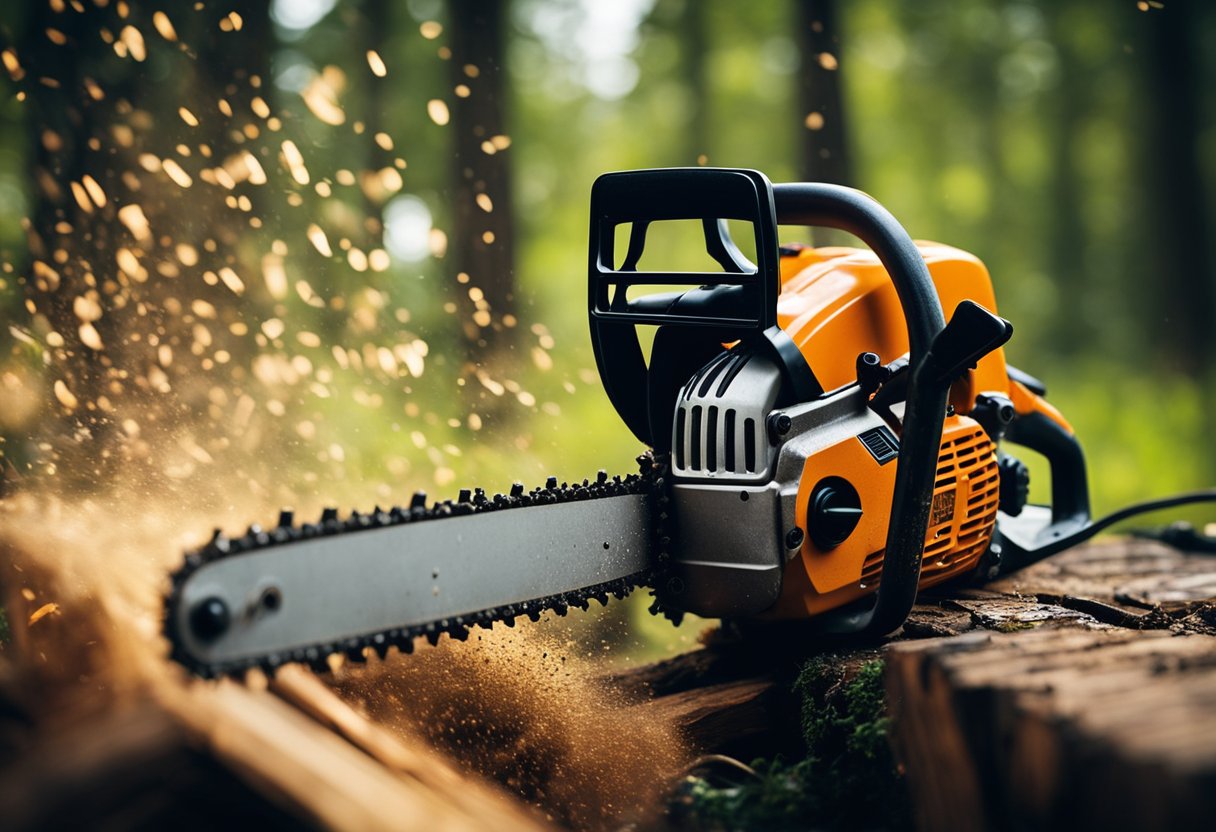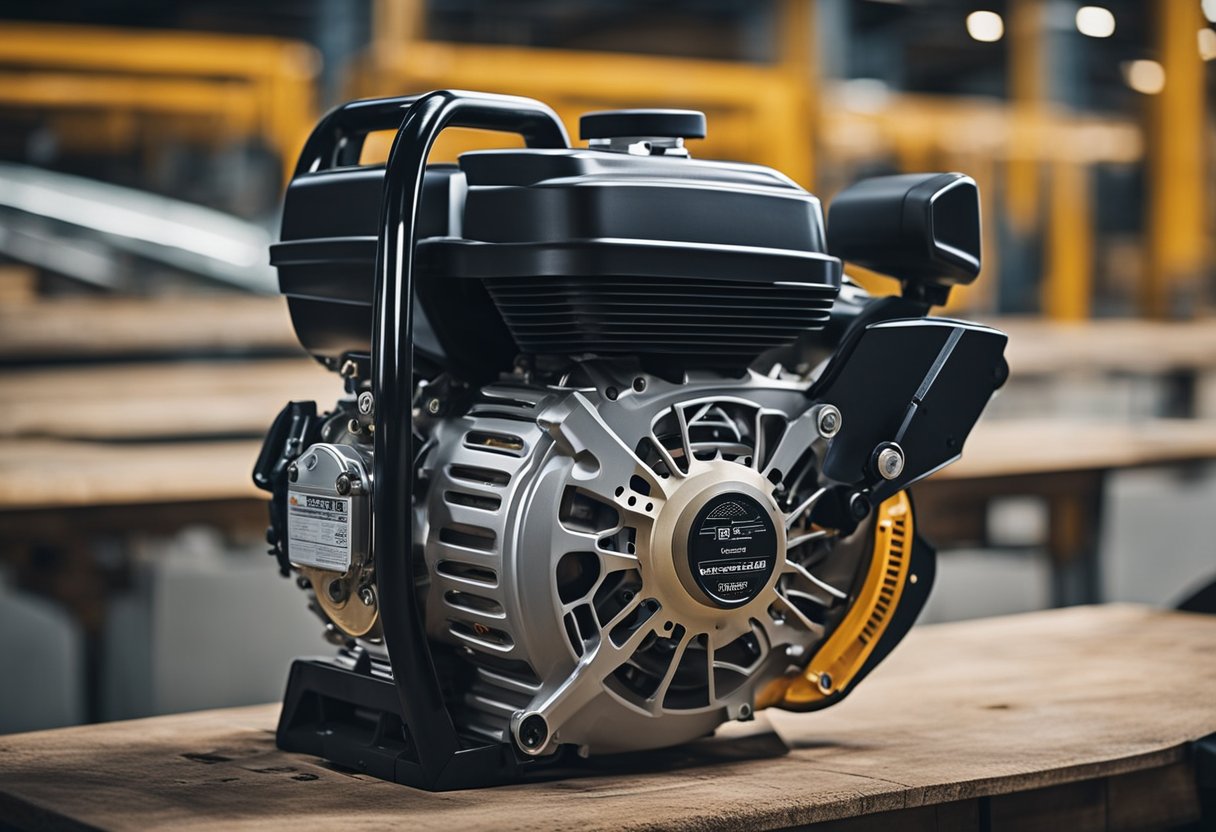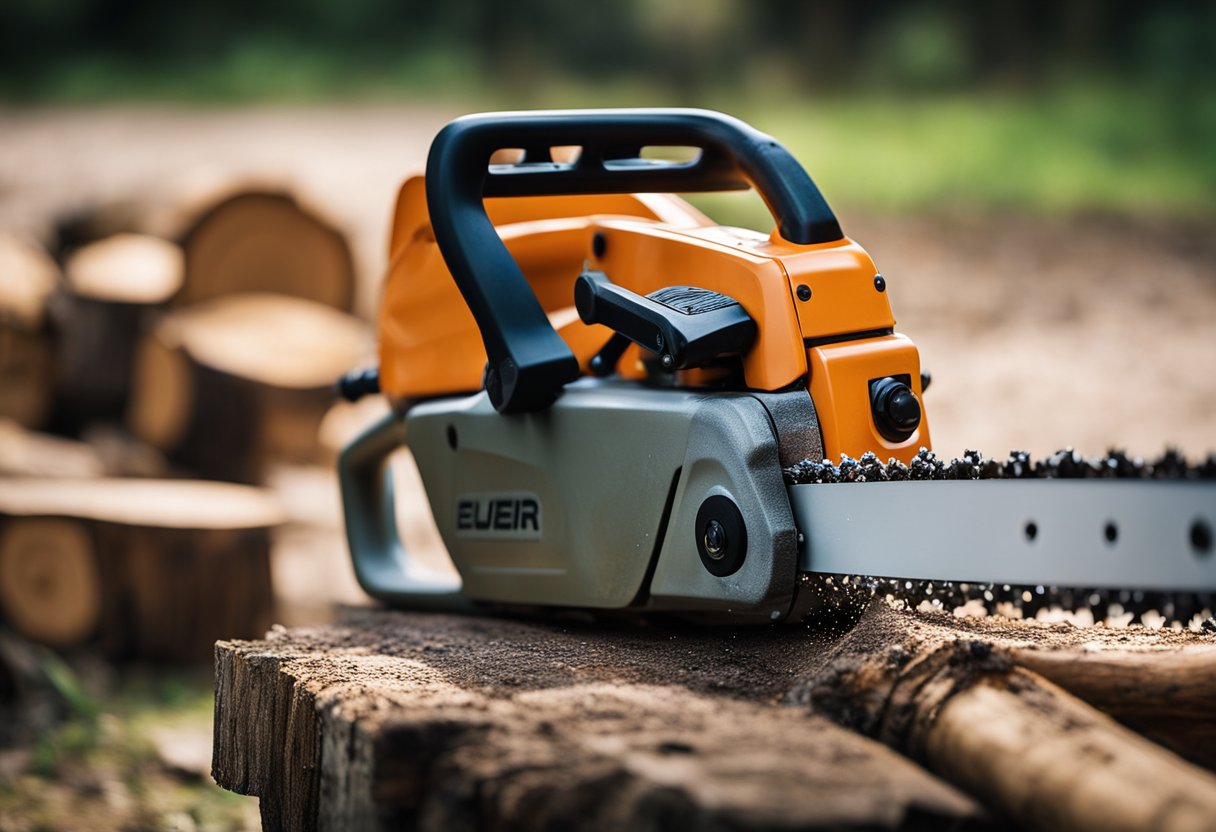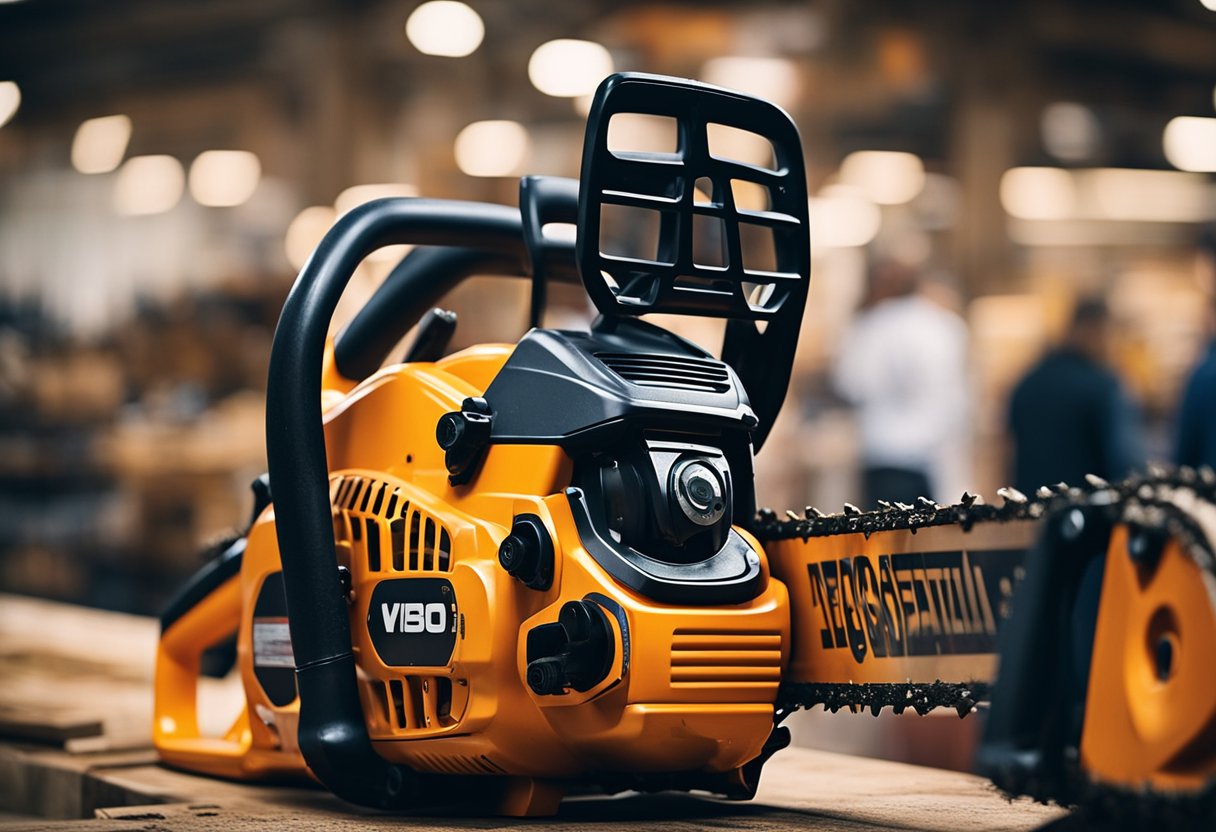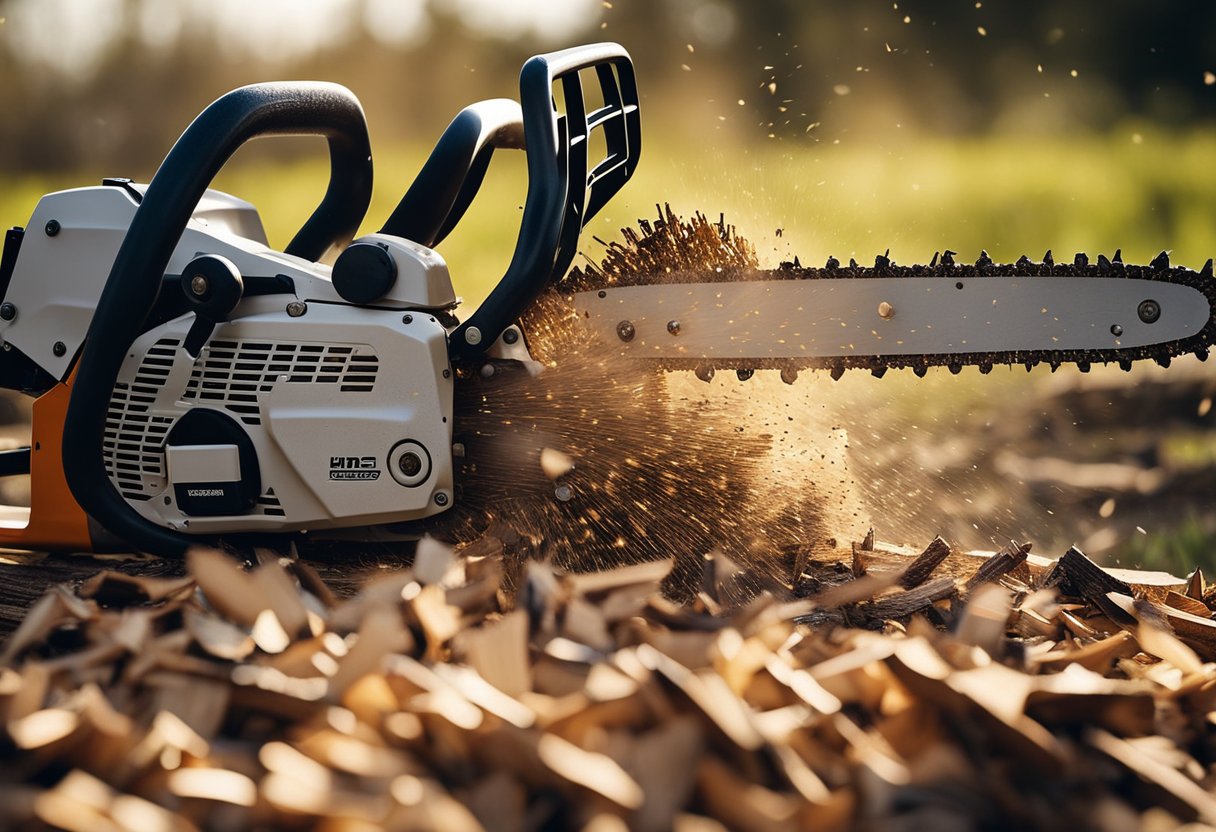I have been using chainsaws for over a decade, and one thing that has always fascinated me is the speed at which the chainsaw chain rotates. Chainsaws are powerful tools that can cut through wood with ease, and the speed at which they operate is a critical factor in their performance. In this article, I will explore the question of how many RPMs a chainsaw runs and provide some insights into the factors that influence chainsaw RPM.
Understanding chainsaw RPM is essential for anyone who uses these tools. RPM stands for revolutions per minute, and it refers to the number of times the chainsaw chain rotates in one minute. The RPM of a chainsaw is directly related to the speed at which the chain cuts through wood. A higher RPM means that the chain will rotate faster, and the chainsaw will cut through wood more quickly. Conversely, a lower RPM means that the chain will rotate more slowly, and the chainsaw will cut through wood more slowly.
The role of the engine is critical in determining the RPM of a chainsaw. The engine provides the power that drives the chain, and the RPM of the engine determines the RPM of the chain. There are several types of chainsaws available in the market, and each one has a different RPM range. In the next section, we will explore the different types of chainsaws and their RPM ranges.
Key Takeaways
- Chainsaw RPM is critical in determining the cutting performance of the tool.
- The engine plays a vital role in determining the RPM of the chainsaw.
- Different types of chainsaws have different RPM ranges.
Understanding Chainsaw RPM
https://www.youtube.com/watch?v=hJv0LMqmk4Y&embed=true
As a seasoned chainsaw user, I have come to understand that RPM (Revolutions Per Minute) is a crucial factor in determining the performance of a chainsaw. RPM refers to the speed at which the chainsaw chain rotates around the guide bar. A higher RPM means that the chain will rotate faster, which in turn increases the cutting speed and power of the chainsaw.
On average, most chainsaws run at around 9,000 to 14,000 RPMs. However, it is important to note that different chainsaws have different RPM ranges. For instance, some chainsaws have a maximum RPM of 7800-8300, while others can go up to 15,000 RPMs.
It is also worth noting that the RPM of a chainsaw can be adjusted depending on the task at hand. For example, when cutting through thicker logs, a higher RPM is required to provide enough power to cut through the wood. On the other hand, when making precision cuts, a lower RPM is more suitable to avoid damaging the wood.
To determine the RPM of your chainsaw, you can consult the manufacturer’s manual or specifications. Most chainsaws also come with a tachometer that displays the RPM in real-time. However, if your chainsaw does not have a tachometer, you can use a chainsaw RPM calculator to determine the RPM range of your chainsaw based on its engine speed and bar length.
In conclusion, understanding chainsaw RPM is essential in determining the performance of your chainsaw. By adjusting the RPM to suit the task at hand, you can increase the cutting speed and power of your chainsaw while also prolonging its lifespan.
The Role of the Engine
As a chainsaw user, I am often asked about the role of the engine in determining the RPM of a chainsaw. The engine is the heart of the chainsaw, and it plays a significant role in determining the RPM of the chainsaw. The engine is responsible for powering the chainsaw, and it does so by converting fuel into energy that is used to power the chainsaw.
The chainsaw engine is a two-stroke engine that uses a spark plug to ignite the fuel. The carburetor is responsible for mixing the fuel and air in the right proportions, and the air filter ensures that only clean air enters the engine. The gas displacement of the engine is also an important factor that determines the RPM of the chainsaw.
The size of the engine also plays a crucial role in determining the RPM of the chainsaw. A chainsaw with a larger engine will typically have a higher RPM than a chainsaw with a smaller engine. However, the size of the engine is not the only factor that determines the RPM of the chainsaw.
The engine speed is another important factor that determines the RPM of the chainsaw. A single-cylinder gas-operated chainsaw typically runs at speeds ranging from 3600 to 4000 RPM 1. However, the RPM of the chainsaw can vary depending on the make and model of the chainsaw. It’s important to consult the manufacturer’s specifications for accurate information on the RPM range for a particular chainsaw.
In conclusion, the engine is the most important component of a chainsaw, and it plays a significant role in determining the RPM of the chainsaw. The carburetor, spark plug, air filter, gas displacement, engine size, and engine speed are all factors that determine the RPM of the chainsaw. As a chainsaw user, it’s essential to understand the role of the engine in determining the RPM of the chainsaw, as it can help you choose the right chainsaw for your needs.
Types of Chainsaws and Their RPM
https://www.youtube.com/watch?v=Lt8LECq1XqU&embed=true
As an experienced chainsaw user, I know that different types of chainsaws have different RPMs. The RPM of a chainsaw is dependent on various factors such as the type of engine and the size of the chainsaw. In this section, I will discuss the RPM of gas-powered chainsaws, electric chainsaws, and the popular Stihl MS 400 C-M chainsaw.
Gas-Powered Chainsaws
Gas-powered chainsaws are the most common type of chainsaws in the market. They are powered by a two-stroke engine that drives the chain at high speeds. The RPM of gas-powered chainsaws ranges from 2,500 to 14,000, depending on the model and size of the chainsaw. Larger chainsaws tend to have higher RPMs than smaller ones.
Electric Chainsaws
Electric chainsaws are powered by an electric motor. They are quieter and more environmentally friendly than gas-powered chainsaws. The RPM of electric chainsaws ranges from 2,000 to 5,500, depending on the model and size of the chainsaw. Electric chainsaws are generally less powerful than gas-powered chainsaws, but they are suitable for light-duty tasks.
Stihl MS 400 C-M Chainsaw
The Stihl MS 400 C-M chainsaw is a gas-powered chainsaw that is designed for professional use. It has a 66.8cc engine that can deliver up to 5.0kW of power. The RPM of the Stihl MS 400 C-M chainsaw is 13,500, which is higher than the average RPM of gas-powered chainsaws. This high RPM allows the chainsaw to cut through tough materials quickly and efficiently.
In conclusion, the RPM of a chainsaw is an important factor to consider when choosing a chainsaw. Gas-powered chainsaws tend to have higher RPMs than electric chainsaws, and larger chainsaws tend to have higher RPMs than smaller ones. The Stihl MS 400 C-M chainsaw is a professional-grade chainsaw that has a high RPM of 13,500.
Measuring Chainsaw RPM
https://www.youtube.com/watch?v=lRNmUItnOls&embed=true
As a chainsaw operator, it is essential to know the RPM of your chainsaw to ensure optimal performance and prevent damage. Measuring the RPM of a chainsaw can be done with a tachometer, which is a tool that measures the revolutions per minute of an engine.
There are different types of tachometers available, including digital and handheld tachometers. When selecting a tachometer, it is important to choose one that is compatible with your chainsaw model and has a high accuracy rate.
One of the best chainsaw tachometers on the market is the Echo tachometer. This tachometer is specifically designed for use with Echo chainsaws and is highly accurate. Another popular option is the Stihl Chainsaw EDT 9 Tachometer, which is compatible with most Stihl chainsaw models.
To measure the RPM of your chainsaw, you will need to attach the tachometer to the spark plug wire. Once attached, start the chainsaw and allow it to run at full throttle. The tachometer will then display the RPM of the chainsaw.
It is important to note that the RPM of a chainsaw can vary depending on the engine speed and the type of chain being used. Therefore, it is recommended to measure the RPM of your chainsaw with the chain that you will be using for your cutting task.
In conclusion, measuring the RPM of a chainsaw is a crucial step in ensuring optimal performance and preventing damage. By using a compatible and accurate tachometer, you can easily measure the RPM of your chainsaw and make any necessary adjustments for optimal performance.
Factors Influencing Chainsaw RPM
https://www.youtube.com/watch?v=CHtu28AJLQ0&embed=true
As a chainsaw user, it is important to understand the factors that can influence the RPM of your chainsaw. Knowing these factors can help you get the most out of your chainsaw and ensure that it operates at its optimal level. Below are some of the factors that can affect the RPM of a chainsaw:
Fuel Mixture
The fuel mixture is an important factor that can affect the RPM of a chainsaw. If the fuel mixture is too rich, the chainsaw may run at a lower RPM. On the other hand, if the fuel mixture is too lean, the chainsaw may run at a higher RPM. It is important to follow the manufacturer’s specifications for the fuel mixture to ensure that the chainsaw runs at its optimal RPM.
Bar Length
The bar length of a chainsaw can also affect its RPM. A longer bar length can cause the chainsaw to run at a lower RPM, while a shorter bar length can cause the chainsaw to run at a higher RPM. It is important to choose the right bar length for the job to ensure that the chainsaw operates at its optimal RPM.
Chain Type
The type of chain used on a chainsaw can also affect its RPM. Different chains have different specifications for the maximum RPM they can handle. It is important to choose the right chain for the job to ensure that the chainsaw operates at its optimal RPM.
Throttle Trigger
The throttle trigger is an important component of a chainsaw that can affect its RPM. If the throttle trigger is not working properly, it can cause the chainsaw to run at a lower RPM. It is important to check the throttle trigger regularly to ensure that it is working properly.
Idle Setting
The idle setting of a chainsaw can also affect its RPM. If the idle setting is too low, the chainsaw may run at a lower RPM. On the other hand, if the idle setting is too high, the chainsaw may run at a higher RPM. It is important to adjust the idle setting to ensure that the chainsaw operates at its optimal RPM.
Sprocket Tooth Count
The sprocket tooth count is another factor that can affect the RPM of a chainsaw. A higher tooth count can cause the chainsaw to run at a lower RPM, while a lower tooth count can cause the chainsaw to run at a higher RPM. It is important to choose the right sprocket tooth count for the job to ensure that the chainsaw operates at its optimal RPM.
In conclusion, understanding the factors that can influence the RPM of a chainsaw is important for any chainsaw user. By following the manufacturer’s specifications and choosing the right components for the job, you can ensure that your chainsaw operates at its optimal RPM and gets the job done efficiently.
Safety and Chainsaw RPM
As an experienced chainsaw user, I know that safety is of utmost importance when operating a chainsaw. One aspect of safety that is often overlooked is the chainsaw’s RPM. The RPM of a chainsaw can affect its performance, but it can also pose a safety risk if not properly managed.
When a chainsaw is operated at high RPM, it can cause damage to the saw’s engine, as well as cause overheating. This can lead to a decrease in the chainsaw’s lifespan and can also pose a safety risk to the operator. Overheating can cause the chainsaw to malfunction, which can lead to serious injury.
Another safety risk associated with chainsaw RPM is kickback. Kickback occurs when the chainsaw’s bar or chain hits an object, causing the saw to jerk back towards the operator. This can happen when the chainsaw is operated at high RPM. To avoid kickback, it is important to operate the chainsaw at a safe RPM and to always use the proper safety gear, such as a helmet, gloves, and eye protection.
To ensure safe operation of a chainsaw, it is important to consult the manufacturer’s specifications for accurate information on the RPM range for a particular chainsaw. It is also important to use the appropriate chainsaw for the task at hand. A higher RPM chainsaw can handle more demanding tasks, but it also consumes more fuel. On the other hand, lower RPM models are more suitable for lighter work and precision cuts.
In conclusion, when it comes to chainsaw RPM, safety should always be the top priority. By following the manufacturer’s specifications and using the appropriate chainsaw for the task at hand, operators can ensure that they are operating their chainsaw at a safe RPM and minimizing the risk of injury or damage.
RPM and Cutting Performance
https://www.youtube.com/watch?v=6jAqXkt2zYA&embed=true
As a chainsaw user with over a decade of experience, I can confidently say that the RPM of a chainsaw plays a significant role in its cutting performance. The higher the RPM, the faster the chain rotates, resulting in a higher cutting speed. However, it’s important to note that a higher RPM doesn’t always mean better cutting performance. The type of wood being cut, the chain’s sharpness, and the chainsaw’s power also play a crucial role in determining the cutting performance.
When it comes to cutting hardwoods, a chainsaw with a higher RPM can make a significant difference in cutting power and efficiency. Hardwoods, such as oak and maple, require a chainsaw with a higher cutting power to cut through them efficiently. A higher RPM chainsaw can provide the necessary cutting power to cut through hardwoods with ease.
On the other hand, for softer woods like pine and cedar, a chainsaw with a lower RPM can be more suitable for precision cuts. A chainsaw with a lower RPM can provide better control and accuracy when cutting softer woods, resulting in a cleaner and smoother cut.
It’s also worth noting that the cutting performance of a chainsaw is not solely determined by its RPM. The chainsaw chain speed, which varies with engine speed, also plays a crucial role in cutting performance. For most chainsaws, the chain speed at max power RPM is the most relevant one for cutting performance, which is usually around 9,000 to 10,000 RPM [1].
In conclusion, while the RPM of a chainsaw is a crucial factor in determining its cutting performance, it’s not the only factor. The type of wood being cut, the chainsaw’s power, and the chainsaw chain speed also play a significant role in determining the cutting performance. As a chainsaw user, it’s essential to understand the relationship between RPM and cutting performance to ensure you choose the right chainsaw for the job.
Chainsaw RPM in the Market
As a seasoned chainsaw user, I have come across various chainsaw RPMs in the market. Chainsaw RPMs have a wide range, depending on the make and model of the chainsaw. Manufacturers design chainsaws to cater to different needs, from light-duty to heavy-duty tasks.
Stihl and Husqvarna are two of the most popular chainsaw manufacturers in the market. They both have their own chainsaw RPM charts, which provide information on the specific RPM range for each chainsaw model. These charts are useful when selecting the right chainsaw for a particular task.
For instance, the Stihl MS 170 chainsaw has a maximum RPM of 12,000, while the Husqvarna 435 chainsaw has a maximum RPM of 9,000. This information is crucial when deciding which chainsaw to use for a particular task.
As a reviewer, I have used both Stihl and Husqvarna chainsaws, and I can attest to their quality and reliability. Both manufacturers offer chainsaws with different RPM ranges, catering to different needs.
Aside from the RPM charts provided by manufacturers, there are also solutions for adjusting chainsaw RPMs. For example, Uncle Richard’s Chainsaw RPM Limiter is a device that limits the chainsaw RPM to a safe level, preventing engine damage and increasing the lifespan of the chainsaw.
In conclusion, chainsaw RPMs vary widely in the market, depending on the manufacturer and the chainsaw model. It is essential to consider the RPM range when selecting the right chainsaw for a particular task. Manufacturers such as Stihl and Husqvarna provide RPM charts for their chainsaws, which are useful when making a decision. Additionally, solutions such as Uncle Richard’s Chainsaw RPM Limiter can help maintain the chainsaw’s RPM at a safe level, preventing engine damage and increasing the lifespan of the chainsaw.
Frequently Asked Questions
What is the maximum RPM of a Stihl 026 chainsaw?
The maximum RPM of a Stihl 026 chainsaw is approximately 13,000 RPM. However, it is important to note that this can vary based on factors such as the age of the chainsaw and the condition of its parts.
What is the idle RPM of a chainsaw?
The idle RPM of a chainsaw can vary depending on the make and model. However, most chainsaws idle at around 2,800 to 3,400 RPM. It is important to check the user manual for your specific chainsaw to determine the recommended idle RPM.
What is the highest RPM of a chainsaw?
The highest RPM of a chainsaw can vary depending on the make and model. However, on average, a chainsaw can run at around 9,000 to 14,000 RPMs. Some chainsaws can reach even higher RPMs, but this can lead to increased fuel consumption and wear on the chainsaw’s engine.
How fast does a chainsaw spin?
The speed at which a chainsaw spins can vary depending on the make and model. On average, a chainsaw can spin at around 9,000 to 14,000 RPMs. However, it is important to note that the speed of a chainsaw can be affected by factors such as the size and type of the chainsaw engine.
What is the maximum RPM of a Stihl 661 chainsaw?
The maximum RPM of a Stihl 661 chainsaw is approximately 14,000 RPM. However, it is important to note that this can vary based on factors such as the age of the chainsaw and the condition of its parts.
Are chainsaws meant to run at full throttle?
While chainsaws are capable of running at full throttle, it is not always necessary or recommended. Operating a chainsaw at full throttle for extended periods can lead to increased fuel consumption and wear on the chainsaw’s engine. It is important to use the appropriate throttle settings for the task at hand, as recommended by the manufacturer.
Footnotes

Hi, I’m Sal Muller of Tooltrip.com. My DIY experience led me to understand essential power tools for home projects. Tooltrip.com guides enthusiasts and professionals in choosing right tools for any job. I provide concise top tool reviews for easier, efficient DIY.

